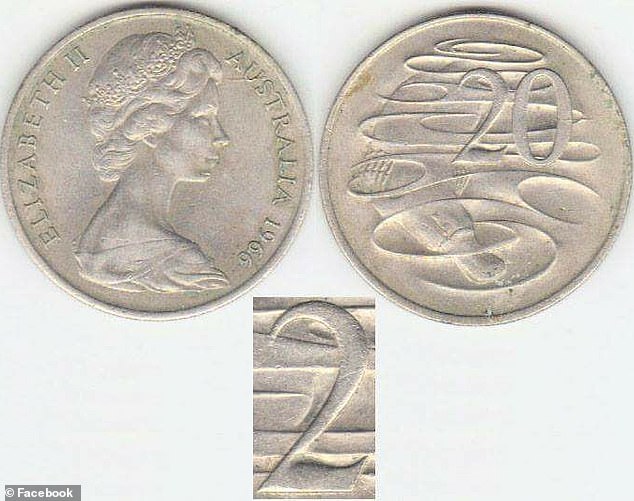Rare Australian $1 coin could be worth thousands because of mistake that took years for anyone to notice
A rare $1 coin could be worth thousands of dollars thanks to a small mistake that took years for anyone to notice.
The rare coin was struck in 2000 with a distinctive ‘double edge’ and could now be worth $3,000, according to the Australian coin collecting blog. A regular $1 coin has one.
‘Check the date. It must be a $1 coin from the year 2000,” the blog said.
‘Then you have to look carefully at the round edge of the coin: is it thicker than normal on the queen side and does it look double?
“If you think that’s the case, you might have a coin worth $1,000 or more. The value of your rare coin now depends on its condition. Some coins are more valuable than others after seventeen years in circulation.”
The so-called ‘$1/10c mule’ coin was created when the mint ‘accidentally combined the mob ‘rose dollar reverse’ with the queen obverse normally used for the 10c piece’.
The smaller size of the 10c coin resulted in the thick, double edge.
Most of the coins were sent to Perth in 2000, but the error was not noticed by collectors until three years later, the blog said.
The ‘mule’ coin features a double border around the Queen’s portrait and is worth between $300 and a whopping $4,000, of which only 6,000 – 7,000 have been released
Aussies shouldn’t turn down the smaller denominations either.
Rare 20c coins, minted in 1966, are highly sought after by collectors because the number 2 has a wavy base line and can be worth between $200 and $3,500 depending on its condition.
In regular 20c pieces, the number 2 has a straight base line.
“The way to identify a wavy baseline 20c is that it must have been minted first in 1966,” said one coin expert.
‘Then look at the lower part of the number ‘2’ stamped on the side of the coin, depicting the platypus.
‘On a normal coin the top and bottom edges of the base line are straight, while on a wavy base coin the top edge has a characteristic wave.’

About half of Australian 20 cent coins made in 1966 have the ‘wavy baseline’ (pictured the rare coin compared to a normal 20 cent coin)

Some 1966 20cent coins have a rare flaw. The bottom line of the number ‘2’ is wavy, making it worth between an impressive €200 and €3500 depending on its condition
Coin expert Matthew Thompson from Town Hall Coins and Collectables in Sydney told Daily Mail Australia that most people accidentally pass on rare coins – so they must be looking for something out of place.
“Mules and errors are rarer and may be found in your change. They have value because the coin generally does not make mistakes,” he said.
“People don’t expect institutions like the Mint to make mistakes,” he said.
‘But things can go wrong every now and then. If you see errors on a coin, if you have something interesting or strange or out of place, then other people will probably find it interesting too – that’s why people collect.”
Mr Jobson warns people looking to start collecting coins to do their research so they are not misused.
‘People put a random price on a coin on eBay. That’s the big problem. People trying to scam people,” he said.
‘If you really want to start collecting, do your research, buy a book or catalogues. Go to a coin specialist.’
